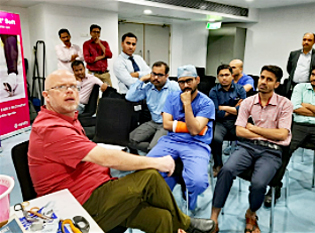The development and growth of the skeletal system from gestation to skeletal maturity creates constant changes in children. Per unit volume, the pediatric bone has a higher water content and lower mineral content,
How little bones are different from adults bones
- The physis (growth plate) is a unique cartilaginous structure that varies in thickness depending on age and location.
- The periosteum in a child is a thick fibrous structure that covers the entire bone except the articular ends. It is highly vascular and helps in faster healing of fractures.
- As a rule, ligaments in children are functionally stronger than bone.
- The blood supply to the growing bone includes a rich metaphyseal circulation with fine capillary loops ending at the physis.
The remodeling potential of bones in the young child is far greater than of adults; this helps returning to the original shape & size of the bone post fracture union.
Common fracture in children.
Because of the structural differences, pediatric fractures tend to occur at lower energy than adult fractures. Compression fractures are found most commonly at the meta-diaphyseal junction and are referred to as “buckle fractures” or torus fractures. Bending movements in the young child cause “greenstick fractures” in which the bone is incompletely fractured, resulting in a plastic deformity on the concave side of the fracture. Towards skeletal maturity , the physis forms a weak link between epiphysis & metaphysis causing “physeal fractures” in adolescents.
Treatment Principles
As a rule, the younger the patient, the greater the remodeling potential, thus absolute anatomic reduction in a child is not mandatory. Immobilization of the fracture in near anatomical alignment is sufficient for the fracture healing.
When possible, restore: – Length, alignment & rotation
- Maintain residual angulation as small as possible using closed treatment methods – molded casts, cast changes, cast wedging, etc.
- Displaced intra-articular fractures will not remodel – anatomic reduction is mandatory
Newer techniques
Most fractures in the pediatric age group can be managed with closed reduction and immobilization in a plaster with a proper molding of the plaster cast. Fiberglass cast applied with proper technique and split/spread is excellent way to safely immobilize limb, maintain reduction and accommodate swelling. Unlike plaster of Paris, this material is far lighter. It is waterproof and more durable and comfortable. When properly applied with good padding, it is better accepted in children.
Last year we conducted master class plaster techniques in children for the DNB trainees. Dr.Sameul Brown from Atlanta medical center, U.S.A demonstrated various advanced techniques of applying splints & casts for the fracture management.
This Master Class was conducted with the intention of spreading awareness about global Best Practices and supporting adoption of innovative techniques with the help of international faculty. Sameul Brown demonstrated focus rigidity casting and shared clinical and patient benefits of this technique. This technique aims to relieve pressure from the plaster material using the new polyester/polyurethane/polypropylene materials that helps maintaining fracture reduction with rigid immobilization in a cast/splint.
 Back to Site
Back to Site


